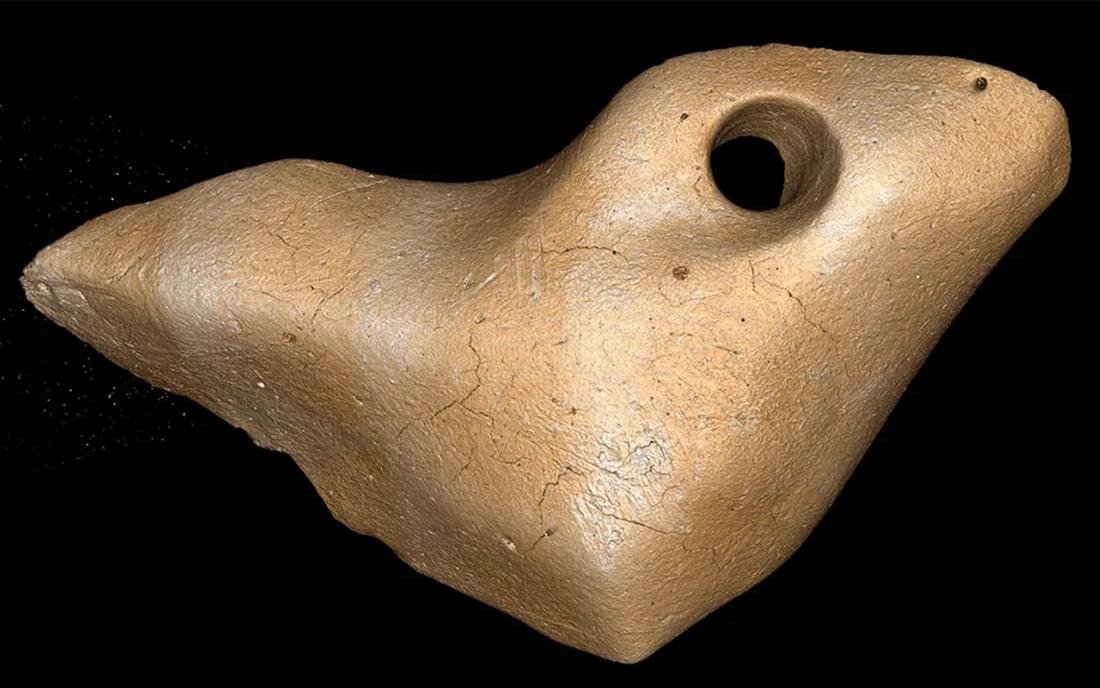New research suggests that humans inhabited the continent alongside now-extinct giant sloths over 25,000 years ago.
The discovery was made at the Santa Elina rock shelter in central Brazil, where archaeologists found three pendants made of bony material from the giant sloth Glossotherium phoenesis, indicating evidence of early human craftsmanship.
 An artist’s impression of a human crafting a pendant from a giant ground sloth bone around 25,000 years ago in Brazil. Credit: Júlia D’Oliveira
An artist’s impression of a human crafting a pendant from a giant ground sloth bone around 25,000 years ago in Brazil. Credit: Júlia D’Oliveira
The pendants, believed to be personal ornaments, were analyzed extensively, and their age was estimated to be between 25,000 and 27,000 years old. This timeline challenges the prevailing assumption that humans only arrived in the Americas around 15,000 years ago, following the Bering land bridge migration from Africa and Eurasia.
The team of researchers, consisting of experts from Brazil, France, and the United States, carefully examined the pendants and ruled out the possibility that they were carved much later by humans who discovered the sloth remains after their extinction.
 This image shows artifacts made of bony material from a giant sloth discovered in Brazil. Credit: Thais Rabito Pansani/AP
This image shows artifacts made of bony material from a giant sloth discovered in Brazil. Credit: Thais Rabito Pansani/AP
The evidence strongly suggests that these artifacts were crafted by humans within days to a few years after the animals had died, well before fossilization occurred.
Mirian Liza Alves Forancelli Pacheco, an archaeologist at the Federal University of São Carlos in Brazil and a co-author of the study, emphasized the significance of the findings, stating, “We now have good evidence – together with other sites from South and North America – that we have to rethink our ideas about the migration of humans to the Americas.”
The presence of human-modified sloth bones alongside stone tools from layers dating back 25,000 to 27,000 years provides compelling evidence that humans inhabited South America much earlier than previously believed.
This discovery is part of a growing body of evidence suggesting that humans reached the Americas long before the Clovis culture (around 13,500 years ago).
The giant ground sloth, Glossotherium phoenesis, was a massive herbivore that weighed over 1,300 pounds and roamed South America on all fours, using its sharp claws to dig burrows.
The use of these giant sloth bones as personal adornments indicates that ancient people interacted with and utilized the remains of these now-extinct creatures in various ways.
 One of the pendants made from giant sloth bone, discovered in Brazil. Credit: Thaís Pansani, Pierre Gueriau
One of the pendants made from giant sloth bone, discovered in Brazil. Credit: Thaís Pansani, Pierre Gueriau
While the findings are groundbreaking, there remains ongoing debate among archaeologists about the precise timeline of human arrival in the Americas. Nonetheless, the new evidence suggests that multiple waves of people may have arrived on the continent during the Last Glacial Maximum, the coldest part of the last ice age and that human dispersal likely followed multiple routes and time frames.
Though the exact meaning of these ancient pendants remains unclear, they provide valuable insights into the lives and activities of early inhabitants of South America.
The research was published in the journal Proceedings of the Royal Society B.